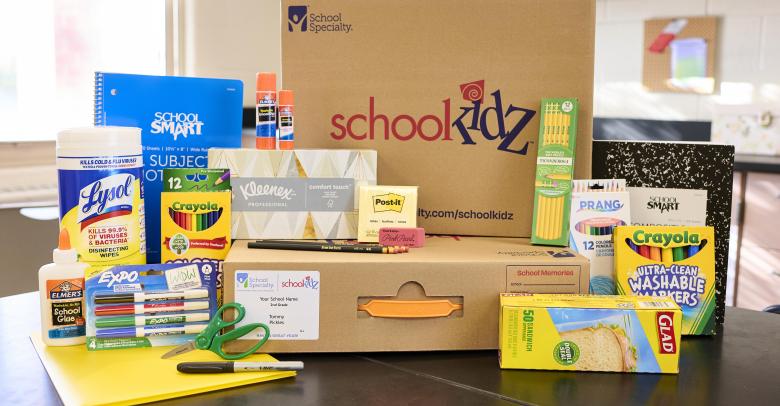Within a few weeks of setting foot in a classroom for my first teaching assignment after graduating from college, there were some things that became abundantly clear. Much of the “theory” that I’d learned in my own classes was exactly that—theory. Students did not learn the way they were “supposed to.” And perhaps most unexpected, despite the practical instruction I’d received on differentiating instruction and accommodating all learners, was the understanding that not all of my students were prepared for what the standards said they needed to learn. In fact, some were so far behind that I wasn’t sure how I could reasonably differentiate my instruction sufficiently to meet their needs
What I came to understand, as every educator does at some point, is that teaching is not a one-size-fits-all activity, and that some students’ needs exceed the needs of their peers. I revisited this idea frequently as a teacher and, later, as a curriculum coordinator, putting in place programs and written curricula to support those students who were below grade level, as well as those way below grade level. Part of our role as educators is to understand the needs of our students — in the classroom, the school, and the district — and provide opportunities for each student to succeed.
Success is frequently measured by how well students perform on a test, and we hope that the test is based on a set of standards. For many, those standards have a name: Common Core. And even for those states that are not actively participating in Common Core, the focus is increasingly on college and career readiness. These rigorous standards, and the assessments that follow, place increasing strain on administrators, teachers and students. They leave educators wondering how they can meet the needs of their struggling students, especially those with special needs and learning disabilities, while helping every student “succeed” as suggested by the standards.
Characteristics of Struggling Students
Students struggle for many reasons. Some of those reasons are largely beyond the control of the teacher: lack of family support, inadequate resources at home, and infrequent attendance are some examples. These situations underscore the importance of relying on multiple data points when considering how to meet students’ needs. For example, high school teachers considering how to help students who failed Algebra need to examine why they failed, not just that they failed. The student who attended class five times was likely not to pass, but an academic intervention may not be warranted if the student is able to complete the work had they come to school. A student who attended class regularly and still failed is far more likely to benefit from the structured support afforded by such an intervention.
Many of the reasons that students struggle are within reach of teachers and administrators. Students with special needs might have physical or emotional handicaps that can be overcome with a small amount of creativity or a new approach to the content. An increasing number of students are identified on the Autism spectrum, with needs that are as diverse as the students themselves. Others face learning disabilities that prevent them from succeeding in a traditional classroom setting in one or more subjects. Yet educators are expected to help each of these students work towards grade-level proficiency along with their peers.
The authors of the Common Core State Standards, along with most state standards, openly acknowledge that the standards are not intended to be prescriptive for students with special needs. The responsibility of identifying and implementing the resources necessary to help these students rests on the teacher. The responsibility to support all students can be addressed in a variety of ways, more than there is room to list here. What follows are some ideas to support students in ELA and math that are proving effective for a range of learners.
Making the ELA Standards Accessible
In the process of assembling the Common Core State Standards for English Language Arts, the authors clearly articulated that, “Students advancing through the grades are expected to meet each year’s grade-specific standards, retain or further develop skills and understandings mastered in preceding grades, and work steadily toward meeting the more general expectations described by the standards.” They also noted, however, that while the standards define the grade-level expectations and learning goals, they “do not define the intervention methods or materials necessary to support students who are well below or well above grade-level expectations. No set of grade-specific standards can fully reflect the great variety in abilities, needs, learning rates, and achievement levels of students in any given classroom.”
One of the more useful tools for reaching those students who are below grade level — and even those way below grade level — is a collection of high interest, low reading level (high-low or hi-lo) readers. There is general agreement that the first step in helping students meet the demands of the standards is to get them reading. Recent results from the National Assessment of Educational Progress (NAEP) suggest that 70 percent of students in grade eight and 65 percent of students in grade 12 are reading below grade level. As these struggling students move into the upper elementary and secondary grades, grade-appropriate content is often far above their reading level. They quickly lose interest in reading.
Librarians and reading specialists agree that students need engaging content that gets them interested in reading. Enter the hi-lo readers. The challenge in selecting an appropriate set of readers for students in middle and high school is finding content that is relevant and age appropriate yet written at a level that encourages reading. There is an increasing variety of options from which educators may choose, with some sets reaching even beginning readers. But how do these hi-lo sets address the demands of today’s standards?
The answer lies in student engagement. If we want students to read at grade level, the first step is to get them reading. It is unreasonable to think that students who are four or more years below grade level will be able to read, infer, and draw conclusions from grade-level texts. This should be the goal, and educators need to do whatever they can to help students grow at a rate that exceeds that of their grade-level peers. Hi-lo readers are one tool to help them achieve that goal.
Making the Math Standards Accessible
In 1989, the National Council of Teachers of Mathematics (NCTM) released a set of standards for mathematics teaching and learning. As they were gradually accepted by educators, the focus was largely on the content standards — what students were going to learn. A lesser emphasis was placed on the standards that identified the instructional practices that outlined how to effectively teach the content. When NCTM revised their standards at the turn of the century, the process standards were again overshadowed by the content standards. Today, with new standards that focus on college and career readiness, including Common Core, the instructional shifts in math are much more pronounced, although they emphasize what NCTM illustrated in 1989: teachers need to help students develop an understanding of concepts and not just facts and algorithms. The concepts are the foundation for future understanding, and many students who struggle with mathematics struggle because they have a foundation that is weak and often full of holes. This is true even for students with special needs and learning disabilities, although they sometimes learn the concepts in a different way.
Early in my career I had the opportunity to work with several higher education faculty whose work focused around making mathematics accessible for all students. What I learned is that there are a few strategies that help anyone master these concepts more efficiently, building a solid foundation for future learning and helping students who are below grade level to accelerate to the level of their peers.
First, representation matters. Students need to see things represented in a variety of ways. The consistent use of visual models to illustrate mathematical concepts is critical in developing the kind of understanding that students need to have. Teachers need to be familiar with different representations — bar models, number lines, and fraction representations come to mind — and use them as appropriate to support instruction. These representations help students make meaning of the numbers and operations they are learning, and even those students who struggle most with mathematics can find a representation that is meaningful to them.
This is especially powerful for students at the secondary level who are below grade level. When a teacher can present a third grade concept to an eighth grade student in a new way, the student is likely to become engaged in the learning experience. They become confident in their ability to do mathematics, and begin to fill in the holes in their foundation and progress toward proficiency.
Another powerful strategy for struggling learners is to control “cognitive overload,” the tendency to want to teach too much at once to help students catch up. This can be harmful to students, because they are quickly overwhelmed, and soon disengage from the instruction. Taking the time to identify the specific holes in each student’s conceptual foundation allows the teacher to focus on the concepts that need attention. Students with special needs and other learning disabilities are particularly vulnerable to the effects of cognitive overload, and teachers need to carefully identify those activities that will best address the needs of these students.
There are other strategies that are also effective. Reviewing concepts throughout the year rather than teaching them once and moving on, emphasizing vocabulary instruction, and providing a variety of opportunities for communication in the classroom all have a positive effect on struggling students. Working towards the goal of grade-level proficiency for all students requires a focused effort and a creative approach to mathematics instruction.
Conclusion
It has never been enough to help struggling students “get by.” However, new standards focused on college and career readiness give teachers and administrators an opportunity to revisit their approach to helping these students succeed and excel. Addressing this challenge and helping all students succeed requires innovative thinking and an acknowledgment that more can be done. Schools and districts bear the responsibility of providing a variety of resources and programs that support all learners and every need. As a whole, these resources need to help teachers identify the strategies and supports that will be most effective for the students they serve.
Resource selection criteria need to weigh not only the features of the core program, but also the tools available to teachers to support students who are struggling. A separate set of criteria should also be considered for supplemental and intervention programs intended for these students who are below grade level, and should reflect a variety of strategies to help accelerate them toward grade-level proficiency. As teachers and administrators work together to carefully select the tools and resources students use in the classroom, they should consider the influence those resources will have on student success. Doing so will ensure that every student has an opportunity to learn and be prepared for the future.






Leave a Reply